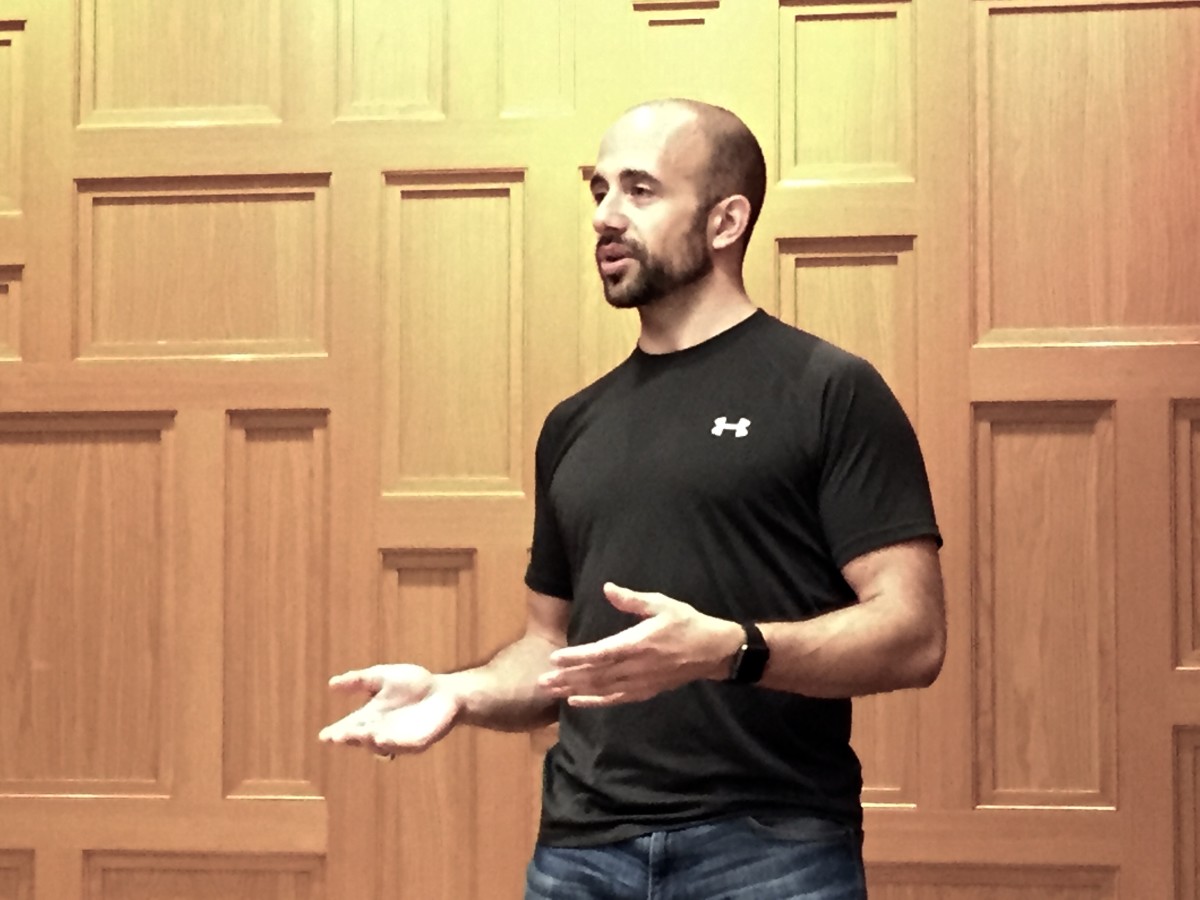Brooklyn’s venture capitalist-in-chief doesn’t want to hear two words: “unicorn” or “Trump.” Those were two things Charlie O’Donnell got out of the way in his introduction to his quarterly event, #notapitch.
#notapitch is a chance for people from the Brooklyn tech community to talk to an actual VC about their ideas. There are no slide decks and no one’s getting funded. There are no lecterns, people stand in the audience and talk. As much as anything else, it’s a tool for the startupper to get some early feedback and for O’Donnell to hear what people are working on at the grassroots level.
As always at these events, O’Donnell dispenses with a treasure trove of experience-tested wisdom, which we’ve collected here. Take notes.
1. Have a good lede
What works in reporting works in pitching. Start out with something that grabs attention and frames the problem quickly. Once you’ve got your audience paying attention, then go back and explain the context and the details. No one wants to get a pitch that starts with life story and why you decided to make the app and then gets around to what it does and why it’s important.
“I often find that most people have no attention span whatsoever,” O’Donnell said to a pitcher who began with a narrative. “Get to what you’re doing as quickly as possible.”
2. Know your customer
“The thing I like is you have clearly experienced being the customer,” O’Donnell said to a woman with a wine startup.
Prior to creating the startup, she’d been a wine store owner for eight years.
“You know as a small business owner, it’s actually the only way you can make these small business things work” he said. “You know the cost of a salesperson, etc.”
3. Be realistic about the size of your audience
One of the pitchers had an idea for a text-based aid for helping you reach your goals. It’s essentially a bot that would nag, yell, or cajole you into running, reading, or whatever goal you have. O’Donnell liked the idea but wondered how many people would be into it. People who are going go that route all-in are going to get a personal trainer or a life coach, others may be fine with a less intrusive app. Just because you yourself would use something doesn’t mean you’re representative of the whole world. O’Donnell recalled his own failed career placement startup.
“What percentage of the population do you represent?” he asked. “I think my startup made the mistake of overestimating how big the aspirational population is. Eighty-five percent of people said they’re not happy in their jobs. And people asked me who the target was and I said, ‘Well, almost everyone.’ But there’s a lot of people who say, ‘Well, you know that’s why they call it a job.'”
4. Don’t believe that if you make something cool it will monetize itself
One pitcher had an idea which can basically be described as a social app for safe spaces. Cyber-hate and abusive language would be policed by an artificially intelligent bot.
“A lot of times with social apps it’s easy to think, ‘Oh Snapchat wasn’t a business at some point, so I’ll just build a thing,” O’Donnell said. “But that doesn’t mean the founders of those companies didn’t have an idea of what it would be. It was obvious to Twitter that they could do ads in search. With Snapchat they’ve been thinking, ‘How do we make ads in here, how do we make compelling sponsored content?’ If you’re going to build social communities you have to show someone how you can effectively scale them and show how they’ll be monetizable.”
5. Understand what scale a venture capitalist is looking for
Because so many startups fail, VCs have to make a lot of money off a few of them.
A bit like an insurer has to take some money from a lot of people to pay out a lot of money to a few people, a VC has to see the potential for some big wins to be able to underwrite all the failures. Even though O’Donnell is a seed-stage investor who typically doesn’t fund companies if they’ve already gotten more than $750,000 in funding, he’s not looking for exits in the seven digits, for him to fund anything he has to be able to at least see a pathway to a $250 million valuation in the future.
For a company that wanted to be essentially Uber for semi-professional photography, O’Donnell liked the idea, but wondered if they could scale enough to be something a VC would have interest in.
“We’ve seen companies like Kitchensurfing but when you see the net amount of money that goes into the pocket of the startup for each sale, it’s not that much,” he said. “You have to pick up a lot of laundry before TaskRabbit is making any money. The net economics of the company is going to be an investor’s biggest question. How do you get enough photo sessions to have the company make money?”
6. If you can avoid taking VC money, avoid it
There are a lot of great ideas that are not going to ever be worth a billion dollars. Almost nothing is worth a billion dollars, even probably most of the stuff that is worth a billion dollars. And that’s OK. You can build a good startup and a good company with small-scale financing or an angel investor or loans from friends and family.
“If you don’t take money, that way you can maintain control,” O’Donnell said to one pitcher. “I think it’s very possible to do and I think when it’s possible to do, it’s better to do.”
Join the conversation!
Find news, events, jobs and people who share your interests on Technical.ly's open community Slack
